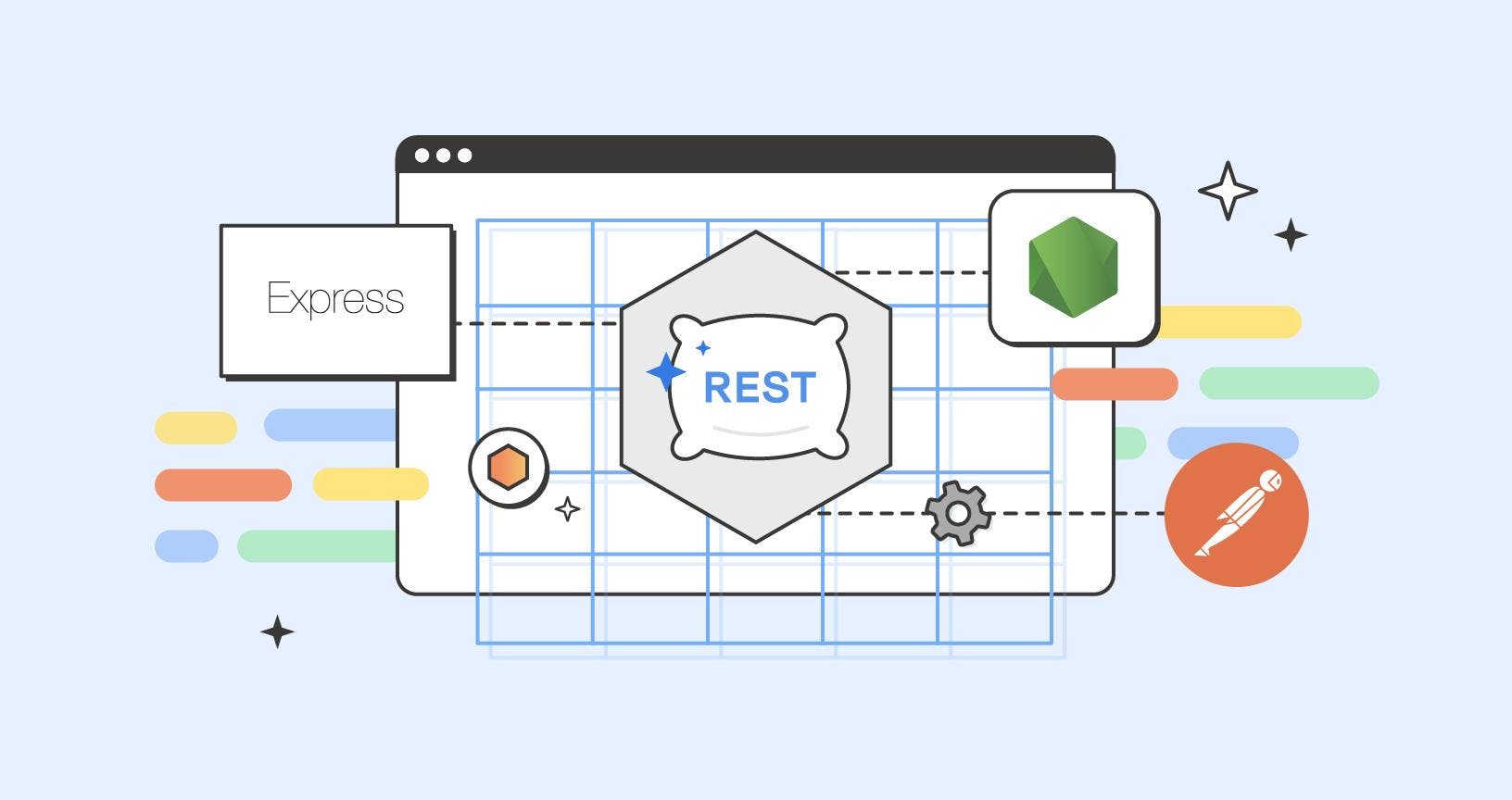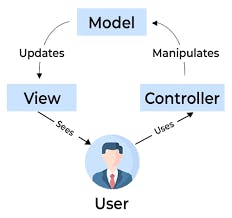Building a RESTful CRUD API with Express and MongoDB for User Management: A Complete Guide

"Mastering User Management with RESTful CRUD API Development in Node.js, Express and MongoDB"
Let's dive into modern web development! This guide will help you build a RESTful CRUD API for user management with Node.js and MongoDB. Learn to create, read, update, and delete user records while following REST best practices. Whether you're a seasoned developer or just starting, join us in crafting efficient user data management tools.
Let's begin!!
Folder Structure
project-root/
├── controllers/
│ └── userController.js
├── models/
│ └── userModel.js
├── routes/
│ └── userRoutes.js
├── app.js
Certainly, here are short and crisp points highlighting the importance of a well-structured folder layout for your CRUD API project:
Modularity: Isolates different parts of the application for easier management.
Reusability: Allows you to reuse code in various parts of your project or in future endeavors.
Clarity: Enhances code readability and maintainability for developers.
Scalability: Easily accommodates the addition of new features and components.
Collaboration: Facilitates efficient teamwork by providing a consistent structure.
Debugging: Simplifies the identification and resolution of issues within the codebase.
Maintenance: Makes it easier to maintain and update the codebase as the project evolves.
Best Practices: Adheres to industry best practices, including the MVC architecture, promoting clean and organized code.
This structured approach significantly contributes to a more efficient and manageable web development project.

Package.json
{
"name": "your-project-name",
"version": "1.0.0",
"description": "Your project description",
"main": "app.js",
"scripts": {
"start": "node app.js",
"dev": "nodemon app.js"
},
"author": "Your Name",
"license": "MIT",
"dependencies": {
"express": "^4.17.1", // Express.js for building the server
"mongoose": "^6.1.3" // Mongoose for MongoDB database interaction
// Add other project-specific dependencies here
},
"devDependencies": {
"nodemon": "^2.0.14" // Nodemon for development server auto-restart
// Add other development dependencies here
}
}
- Create
userModel.jsin themodelsfolder:
// models/userModel.js
const mongoose = require('mongoose');
const userSchema = new mongoose.Schema({
username: String,
email: String,
// Add more fields as needed
});
module.exports = mongoose.model('User', userSchema);
2.Create userController.js in the controllers folder:
// controllers/userController.js
const User = require('../models/userModel');
// Create a new user
const createUser = async (req, res) => {
try {
const user = new User(req.body);
const newUser = await user.save();
res.json(newUser);
} catch (error) {
res.status(400).json({ error: error.message });
}
};
// Get all users
const getUsers = async (req, res) => {
try {
const users = await User.find();
res.json(users);
} catch (error) {
res.status(500).json({ error: 'Internal Server Error' });
}
};
// Get Particular User by Id
const getUserById = async (req, res) => {
try {
const user = await User.findById(req.params.id);
if (!user) {
return res.status(404).json({ error: 'User not found' });
}
res.json(user);
} catch (error) {
res.status(500).json({ error: 'Internal Server Error' });
}
};
// Update user by ID
const updateUser = async (req, res) => {
try {
const updatedUser = await User.findByIdAndUpdate(req.params.id, req.body, { new: true });
res.json(updatedUser);
} catch (error) {
res.status(400).json({ error: error.message });
}
};
// Partially update user by ID
const updateUserPartial = async (req, res) => {
try {
const updatedUser = await User.findByIdAndUpdate(req.params.id, req.body, { new: true });
if (!updatedUser) {
return res.status(404).json({ error: 'User not found' });
}
res.json(updatedUser);
} catch (error) {
res.status(500).json({ error: 'Internal Server Error' });
}
};
// Delete user by ID
const deleteUser = async (req, res) => {
try {
await User.findByIdAndRemove(req.params.id);
res.json({ message: 'User deleted successfully' });
} catch (error) {
res.status(400).json({ error: error.message });
}
};
module.exports = {createUser,getUsers,getUserById,updateUser,updateUserPartial, deleteUser}
3.Create userRoutes.js in the routes folder:
// routes/userRoutes.js
const express = require('express');
const {createUser,getUsers,getUserById,updateUser,updateUserPartial,deleteUser} = require('../controllers/userController');
const router = express.Router();
// For Beginners
router.post('/users', createUser); // Create a new user
router.get('/users', getUsers); // Get all users
router.get('/users/:id', getUserById); // Get user by ID
router.put('/users/:id',updateUser); // Fully update user by ID
router.patch('/users/:id',updateUserPartial); // Partially update user by ID
router.delete('/users/:id', deleteUser); // Delete user by ID
or
// Grouping user-related routes under '/users' path
router.route('/users')
.post(createUser) // POST /users - Create a new user
.get(getUsers); // GET /users - Retrieve all users
// Grouping routes for a specific user by their ID
router.route('/users/:id')
.get(getUserById) // GET /users/:id - Retrieve a specific user by ID
.put(updateUser) // PUT /users/:id - Update a specific user by ID
.patch('/users/:id',updateUserPartial); // PATCH /users/:id Partially update user by ID
.delete(deleteUser); // DELETE /users/:id - Delete a specific user by ID
module.exports = router;
5.Set up the Express app in index.js
// index.js
const express = require('express');
const mongoose = require('mongoose');
const userRoutes = require('./routes/userRoutes');
const app = express();
app.use(express.json());
// Connect to MongoDB
mongoose.connect('mongodb://localhost/your-database-name', { useNewUrlParser: true, useUnifiedTopology: true })
.then(() => {
console.log('Connected to MongoDB');
})
.catch((error) => {
console.error('Error connecting to MongoDB:', error);
});
// Use the user routes
app.use('/api', userRoutes);
const port = process.env.PORT || 6000;
app.listen(port, () => {
console.log(`Server is running on port ${port}`);
});
Conclusion:
In this comprehensive guide, we've embarked on a journey through the creation of a RESTful CRUD API using Node.js, express and MongoDB, culminating in the addition of essential authentication middleware. We've covered a wide range of critical topics, from setting up a well-organized folder structure to building the core components of your API, and finally, securing it against unauthorized access.
By following the MVC architecture and adhering to best practices, you've learned how to structure your project for modularity, reusability, and scalability. This not only promotes a clean and organized codebase but also simplifies collaboration among development teams.
Throughout this journey, you've:
Set Up Your Project: Established a structured project with the right dependencies and development tools, such as
nodemonfor automatic server restarts.Created Endpoints: Developed routes, controllers, and models for your CRUD operations, providing a powerful foundation for managing user data.
Tested Your API: Utilized tools like Postman to thoroughly test your API, validating that it functions as expected and handles requests gracefully.
The skills and knowledge you've gained throughout this journey are not limited to user management but apply to a wide range of web development projects. As you continue to refine your skills, remember that web development is a dynamic field, and there's always more to learn and explore. The journey doesn't end here; it's only the beginning of your exciting adventures in web development.
If you understood anything I said here please give a clap reaction and follow me because it helps me to stay motivated and take out time from my schedule to write these articles. It will not cost you anything but will help me a lot